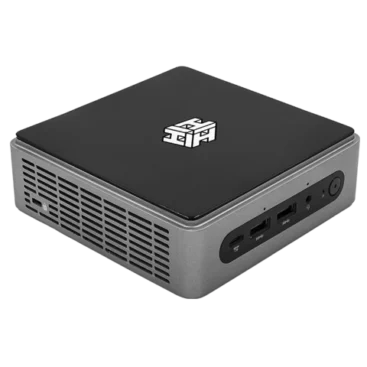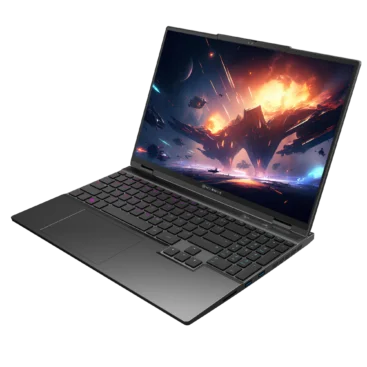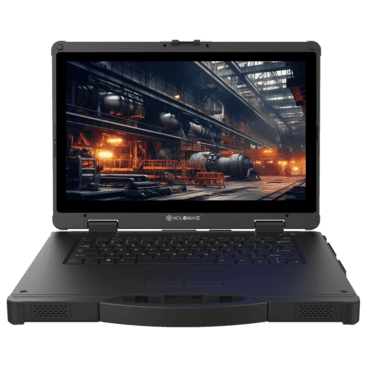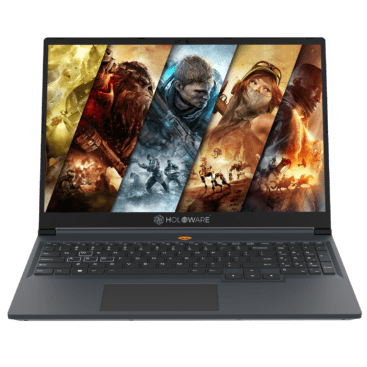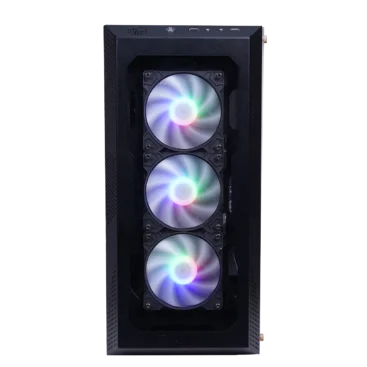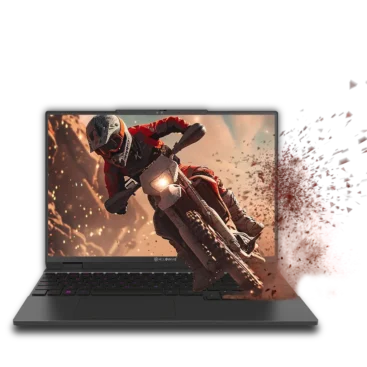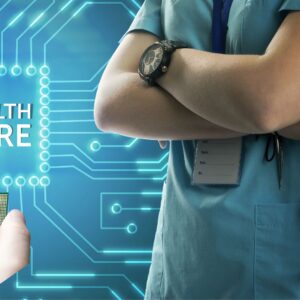
COMPUTERS AND HEALTH CARE (A CASE STUDY)
Computers and AI Transform Healthcare Innovation
1. The Pillars of Healthcare: Computers and AI
In modern healthcare, computers and AI are pivotal pillars, revolutionizing patient care and management. Computers streamline tasks, from administration to diagnostics, enhancing efficiency and accuracy. AI relies on computers for complex data processing, aiding in diagnostics and treatment planning. Together, they enable medical imaging, EHR management, and telemedicine, improving healthcare accessibility and outcomes. As essential components, computers and AI are reshaping healthcare delivery, making processes more efficient and patient centric. Their integration signifies a transformative shift in healthcare towards advanced, data-driven practices.
2. Technology is the Bedrock of Healthcare:
In the modern era, technology has become the foundation of healthcare, transforming the way healthcare is delivered, managed, and experienced. From electronic health records to medical imaging, telemedicine to AI-driven diagnostics, technology has revolutionized every aspect of healthcare. It has enabled real-time monitoring of patient health, streamlined administrative tasks, and facilitated remote consultations, making healthcare more accessible and efficient. With technology at the core of healthcare, healthcare providers can deliver better patient outcomes, reduce costs, and enhance the overall healthcare experience. As technology continues to advance, its role as the bedrock of healthcare will only become more significant.
3. The Multifaceted Role of Computers:
Think of a computer as a Swiss Army Knife in the healthcare industry. In administrative offices, they ensure smooth operations, scheduling surgeries, and processing insurance claims. Within patient rooms, they power sophisticated medical imaging machines, capturing detailed scans that reveal everything from hairline fractures to hidden tumors. Even operating rooms have become high-tech havens, where computers guide robotic arms during minimally invasive surgeries, minimizing scarring and recovery time. These specialized machines are built for a purpose, boasting hardware specifically designed to handle complex medical software and deliver optimal performance under pressure.
4. The Broad Spectrum of Computer Applications in Healthcare:
The applications of computers in healthcare are very vast. They facilitate medical imaging, the holy grail of diagnostics, allowing doctors to peer inside the body and diagnose diseases with unmatched accuracy. Electronic health records (EHRs) serve as a patient’s digital medical bible, storing their entire medical history in one secure location, accessible by authorized healthcare professionals. This not only eliminates the hassle of paper charts but also allows for a more comprehensive view of a patient’s health, leading to better-informed treatment decisions. Telemedicine, a gift of the digital age, leverages computers and video conferencing to connect patients with specialists remotely, bridging geographical barriers and ensuring timely access to care.
5. Revolutionizing Healthcare: The Impact of Computers and AI
The impact of computers and AI on healthcare is nothing short of a revolution. These technologies, once relegated to the realm of science fiction, are now woven into the fabric of modern medical practice. Gone are the days of endless paperwork and long wait times. With computers managing administrative tasks and AI algorithms analyzing data to predict potential health issues, the industry is shifting towards a more efficient and patient-centric approach.
6. The Powerhouse Partnership: Computers and AI
Think of AI as the brilliant detective, solving complex medical mysteries, but it needs a powerful computer as its trusty sidekick. AI algorithms are data hungry, requiring immense computational power to process and analyze vast amounts of medical information. They sift through mountains of patient data, identifying patterns that might lead to earlier diagnoses, personalized treatment plans, and even the development of new drugs. Without the processing muscle of computers, AI wouldn’t be able to make the complex calculations and predictions that are revolutionizing medical care.
7. The Future is Bright:
The future of healthcare is inextricably linked to the continued advancement of computers and AI. As these technologies evolve, we can expect even more groundbreaking innovations. Imagine a world where AI-powered robots perform complex surgeries with unmatched precision, or where personalized medicine, tailored to an individual’s unique genetic makeup, becomes the norm. The possibilities are endless, and the future of healthcare, thanks to computers and AI, is undeniably bright.
Types of Computers in Healthcare
The human body is a complex machine and keeping it running smoothly requires a diverse toolbox. In the modern healthcare setting, that toolbox no longer relies solely on stethoscopes and thermometers. Today, a variety of computers, each with its own strengths and applications, have become essential instruments in diagnosing illnesses, monitoring patients, and delivering the best possible care. From the familiar desktop PC to cutting-edge wearables, let’s delve into Types of Computers in Healthcare.
Desktop Computers
These are the traditional workhorses of the healthcare industry. They are typically used for administrative tasks such as managing patient records, scheduling appointments, and billing. Additionally, they run specialized software for diagnostics and treatment planning.
Laptop Computers
Laptops offer the advantage of portability, allowing healthcare professionals to access patient information, review medical images, and communicate with colleagues from anywhere within the healthcare facility. This flexibility can be particularly beneficial in large hospitals or in situations where healthcare providers need to make house calls.
Tablets and Mobile Devices
With their compact size and intuitive interfaces, tablets and mobile devices have become increasingly prevalent in healthcare settings. They are often used for bedside documentation, allowing healthcare providers to update patient records in real time. They also facilitate remote patient monitoring and provide quick access to medical references and educational resources.
Wearable Devices
Wearable computers such as smartwatches and fitness trackers are being integrated into healthcare for patient monitoring purposes. They can track vital signs, activity levels, and other health-related metrics, providing valuable data for preventive care and disease management.
Embedded Systems
These are specialized computers that are integrated into medical devices and equipment. They power functionalities such as patient monitoring, medical imaging, and surgical robotics, playing a crucial role in diagnostics and treatment.
Server Computers
Server computers are a critical component of the healthcare IT infrastructure. They host the electronic health record (EHR) systems, patient databases, and other critical applications. Servers ensure that patient data is securely stored and readily accessible to authorized personnel. They also enable the sharing of information across different systems and locations, facilitating coordinated care.
Each type of computer plays a unique role in healthcare, contributing to improved patient care, streamlined workflows, and efficient data management. As technology continues to evolve, the role of computers in healthcare is set to become even more significant.
Unveiling the Powerhouse Partnership: Computers and AI in Healthcare
Imagine if medical diagnoses were solely based on intuition and X-rays. Fortunately, that world is a relic of the past. Today, a dynamic duo has emerged in healthcare: computers and Artificial Intelligence (AI). These powerful allies are transforming the way diseases are diagnosed, treatments are planned, and patient care is delivered.
This section delves into the fascinating applications of computers and AI in healthcare. We’ll explore how these technologies work together to revolutionize medical imaging, empower evidence-based decisions, and even predict future health outcomes.
1. Medical Imaging and Diagnostics: A Pixel-Perfect Partnership
Medical imaging plays a pivotal role in modern diagnostics, allowing healthcare professionals to visualize internal structures and identify abnormalities. From X-rays and CT scans to MRIs and ultrasounds, these technologies procifically high-performance workstations (HPC workstations) step in, acting as the unsung heroes of medical imaging analysis.
A. Picture Archiving and Communication Systems (PACS)
PACS is a computer system designed for the storage, retrieval, distribution, and presentation of medical images. It enables healthcare providers to access and interpret digital images from multiple modalities, such as X-rays, MRIs, and CT scans, within a centralized platform. PACS enhances workflow efficiency, facilitates remote image interpretation, and supports collaborative decision-making among healthcare teams.
System architecture for Picture Archiving and Communication System
- Processor: Multi-core Intel Xeon or AMD Ryzen processors for efficient handling of large datasets and concurrent user access.
- Graphics: Dedicated graphics processing unit (GPU) with at least 4GB VRAM for accelerated rendering of medical images.
- RAM: Minimum 16GB DDR4 RAM for smooth operation of PACS software and simultaneous image viewing.
- Storage: Solid-state drive (SSD) with high capacity (e.g., 1TB or more) for fast image retrieval and storage.
- Network: Gigabit Ethernet connectivity to ensure fast transmission of images between PACS server and viewing stations.
- Operating System: Windows Server or Linux-based operating system optimized for server applications.
Case Example: A leading hospital

.A leading Hospital uses high-performance workstations in its radiology department to manage hundreds of daily medical images, from X-rays to ultrasounds. The Picture Archiving and Communication System (PACS) workstation, powered by a multi-core Intel Xeon processor and a dedicated GPU, enables efficient data handling and accelerated image rendering.
With 16GB DDR4 RAM and a high-capacity SSD, the system ensures smooth PACS operation and fast image retrieval. Gigabit Ethernet connectivity allows quick image transmission. The Windows Server operating system enhances workflow efficiency, supports remote image interpretation, and facilitates collaborative decision-making.
By harnessing the power of high-performance workstations in medical imaging, the Hospital has been able to improve patient care, demonstrating the pivotal role of computers in modern healthcare.
B. Radiology Information Systems (RIS)
RIS is a specialized computer system used by radiology departments to manage patient information, scheduling, billing, and reporting related to radiological procedures. Integrating RIS with PACS streamlines the radiology workflow, ensures accurate patient data tracking, and improves communication between radiologists and referring physicians.
System architecture for Radiology Information Systems
- Processor: Quad-core Intel Core i5 or equivalent processor for handling database operations and user interactions.
- RAM: Minimum 8GB DDR4 RAM for efficient management of patient data and scheduling information.
- Storage: Hard disk drive (HDD) with sufficient capacity for storing patient records, scheduling data, and administrative files.
- Network: Ethernet connectivity to integrate RIS with PACS and other clinical systems within the healthcare network.
- Operating System: Windows Server or Linux-based operating system compatible with RIS software requirements.
Case Example: A Top foundation Hospital
A top foundation hospital’s radiology department uses an RIS with a quad-core Intel Core i5 processor, 8GB DDR4 RAM, and a hard disk drive for storage. The system is networked via Ethernet for integration with PACS and other systems. Running on a Windows Server operating system, the RIS has improved the clinic’s radiology workflow, patient data tracking, and communication between radiologists and referring physicians.
C. 3D Medical Imaging Workstations:
These high-performance computer workstations are equipped with advanced visualization software for processing and analyzing 3D medical images, such as volumetric CT and MRI datasets. 3D medical imaging workstations enable Cardiology, Oncology and various other healthcare departments to perform detailed anatomical assessments, surgical planning, and image-guided interventions with enhanced precision and clarity.
System architecture for 3D Medical Imaging Workstations
- Processor: High-performance multi-core Intel Xeon or AMD Ryzen Threadripper processors for intensive 3D rendering and visualization.
- Graphics: Professional-grade GPU with at least 8GB VRAM for real-time rendering and manipulation of volumetric medical datasets.
- RAM: 32GB or more DDR4 RAM for seamless handling of large 3D medical imaging datasets and software processing.
- Storage: NVMe SSD with high capacity and fast read/write speeds for rapid loading and processing of 3D images.
- Operating System: Windows or Linux-based operating system optimized for workstation-grade applications and hardware
Case Example: Cancer Hospital
At a leading Cancer Hospital, a patient was diagnosed with a rare form of cancer that required a delicate surgical procedure. The oncologists used the workstations to analyze volumetric MRI datasets, generating detailed 3D images of the tumor and surrounding tissues. The real-time rendering and manipulation of the images enabled the oncologists and surgeons to plan the procedure with enhanced precision, resulting in successful surgery and a positive outcome for the patient.
These workstations are equipped with high-performance multi-core processors, professional-grade GPUs, and large RAM capacities, enabling seamless handling of large 3D medical imaging datasets and real-time rendering and manipulation of volumetric medical datasets. The fast read/write speeds of the NVMe SSDs allow for rapid loading and processing of 3D images, making these workstations an invaluable tool in various healthcare departments. Furthermore, these workstations run on Windows or Linux-based operating systems, which are optimized for workstation-grade applications and hardware, further enhancing the performance and utility of these workstations. These features collectively contribute to the significant impact of 3D medical imaging workstations in modern healthcare.
D. AI-Powered Image Analysis Platforms:
AI-driven image analysis platforms utilize machine learning algorithms to assist radiologists in interpreting medical images, detecting abnormalities, and quantifying disease markers. These platforms can automatically segment organs, identify lesions, and provide quantitative assessments of tissue characteristics, augmenting the diagnostic capabilities of radiology departments and improving diagnostic accuracy.
System architecture for AI-Powered Image Analysis Platforms
- Processor: Multi-core Intel Xeon or AMD EPYC processors optimized for running deep learning inference algorithms.
- Graphics: NVIDIA Tesla or Quadro GPUs with Tensor Cores for accelerated training and inference of deep neural networks.
- RAM: Minimum 64GB DDR4 RAM for loading large neural network models and processing medical image data in memory.
- Storage: High-speed SSD storage with ample capacity for storing training data, pre-trained models, and inference results.
Case Example: A healthcare institution
A healthcare institution faced challenges in processing and interpreting a growing volume of medical images. They implemented an AI-Powered Image Analysis Platform, which used machine learning to assist in interpreting images, detecting abnormalities, and quantifying disease markers. The system architecture included multi-core Intel Xeon or AMD EPYC processors, NVIDIA Tesla or Quadro GPUs, minimum 64GB DDR4 RAM, and high-speed SSD storage.
This improved the diagnostic capabilities and accuracy, increased efficiency, reduced workload, and allowed handling of a larger volume of cases.
2. Clinical Decision Support Systems (CDSS): Empowering Evidence-Based Medicine
Clinical Decision Support Systems (CDSS) represent a pivotal advancement in healthcare, offering computer-based tools meticulously crafted to aid healthcare providers in making informed decisions about patient care. These systems seamlessly integrate patient data, medical knowledge, and evidence-based guidelines to furnish tailored recommendations and alerts at the point of care. By doing so, CDSS endeavors to enhance clinical decision-making processes, thereby fostering improved patient outcomes and mitigating medical errors through the provision of timely and pertinent information.
Computer Systems Compatible with CDSS Solutions
In the realm of CDSS, the robust functionality necessitates the support of high-performance computer systems, adept at handling the complexity and volume of healthcare data.
High-Performance Servers
CDSS solutions predominantly rely on high-performance servers, featuring multi-core processors, ample RAM, and rapid storage capabilities to effectively manage extensive datasets and facilitate real-time processing of patient data.
System Architecture for High-Performance Servers
The architecture of high-performance servers entails meticulous specifications:
- Processor: Deployment of Dual or Quad Socket Intel Xeon Scalable processors or AMD EPYC processors, designed with multiple cores and threads to enable parallel processing of patient data.
- RAM: Provision of a minimum of 128GB DDR4 ECC RAM (expandable) to accommodate large datasets and facilitate simultaneous user access.
- Storage: Implementation of RAID-configured SSD storage arrays, boasting high capacity (ranging from 1TB to 10TB) and swift read/write speeds to accommodate patient records, medical knowledge bases, and AI models.
- Network: Integration of 10 Gigabit Ethernet connectivity to ensure seamless and expeditious data transmission between servers and client devices.
Workstations
Clinicians access CDSS through dedicated workstations or desktop computers, meticulously equipped to seamlessly integrate with EHR systems and efficiently run CDSS software.
System Architecture for Workstations
The architectural framework of workstations comprises:
- Processor: Utilization of multi-core Intel Core i7 or AMD Ryzen processors, engineered to facilitate rapid data processing and deliver a responsive user experience.
- RAM: Allocation of a minimum of 16GB DDR4 RAM (expandable) to support concurrent execution of CDSS software and EHR applications.
- Storage: Deployment of SSD storage with ample capacity (ranging from 512GB to 1TB) to store patient data locally and execute CDSS applications.
- Graphics: Inclusion of a dedicated GPU, equipped with at least 2GB VRAM, to facilitate the rendering of medical images and visualization of decision support insights.
- Network: Integration of Gigabit Ethernet or Wi-Fi connectivity to enable seamless access to patient data from the hospital network.
Decision Support Algorithms
Decision support algorithms form the cornerstone of CDSS functionality, encompassing a spectrum of advanced methodologies tailored to optimize clinical decision-making:
- Machine Learning Models: These models harness both supervised and unsupervised learning techniques to craft predictive models for risk assessment, treatment recommendations, and diagnostic decision-making.
- Natural Language Processing (NLP): Integration of NLP capabilities facilitates the extraction of structured information from clinical notes, unstructured data, and medical literature, thereby enabling context-aware decision support.
- Clinical Rules Engines: These engines deploy rule-based decision support logic derived from clinical guidelines, protocols, and best practices to furnish actionable insights customized to specific patient conditions and care pathways.
- Integration with EHR: Seamless integration with the hospital network’s EHR system enables automatic retrieval of patient data, lab results, imaging studies, and medication records for real-time decision support. Leveraging HL7 standards and interoperability protocols facilitates bidirectional data exchange between the CDSS and other clinical systems within the healthcare ecosystem.

Case Example: Pediatric Hospital
Consider a scenario where a pediatrician encounters a 2-year-old patient with recurrent respiratory infections and failure to thrive. Leveraging the CDSS, the pediatrician accesses the patient’s EHR data, including growth charts, immunization records, and past medical history. The CDSS meticulously analyzes the data and furnishes recommendations for further diagnostic tests, dietary interventions, and referrals to pediatric specialists as warranted. Additionally, the CDSS alerts the pediatrician to potential red flags in the patient’s history, such as family medical history or medication allergies, ensuring comprehensive and personalized care for the child.
Pediatricians access the CDSS through dedicated workstations meticulously equipped with multi-core processors, ample DDR4 RAM, and SSD storage. These workstations boast intuitive user interfaces tailored for pediatric care, empowering pediatricians to seamlessly navigate patient data and CDSS recommendations. By harnessing the capabilities of CDSS, pediatricians can make informed decisions, provide personalized care, and optimize outcomes for their young patients. The integration of CDSS into pediatric practice not only streamlines clinical workflows but also fosters evidence-based care, ultimately contributing to the well-being of children in the community.
3. Predictive Analytics and Risk Stratification
Predictive analytics and risk stratification are methodologies used in healthcare to analyze large datasets and predict future outcomes, such as disease onset, progression, or adverse events. By leveraging statistical algorithms, machine learning techniques, and patient data, healthcare organizations can identify high-risk populations, personalize interventions, and optimize resource allocation for better patient outcomes.
System architecture for Predictive Analytics and Risk Stratification : High-Performance Servers
- Processor: Multi-core processors with high clock speeds are preferred for faster data processing and model training. Intel Xeon or AMD EPYC processors are commonly used for server-grade computing
- RAM: Ample RAM is essential for loading and manipulating large datasets in memory during predictive modeling and analysis. A minimum of 64GB DDR4 ECC RAM is recommended to handle complex algorithms and ensure smooth operation.
- Storage: RAID-configured SSD storage arrays with high capacity (e.g., 1TB to 10TB) for storing and accessing healthcare data. SSD storage is preferred over HDDs for faster data access and retrieval, which is crucial for handling large healthcare datasets efficiently. RAID configurations can provide redundancy and fault tolerance.
- Graphics: While predictive analytics primarily relies on CPU-based processing, GPU acceleration may be advantageous for certain machine learning algorithms, such as deep learning or ensemble methods. However, GPU requirements may vary based on the specific algorithms and datasets being analyzed.
Case Example: A healthcare institution
A healthcare institution faced challenges in managing its diverse patient population, lacking the ability to predict high-risk patients and allocate resources effectively. This led to reactive healthcare practices, higher costs, and poorer outcomes. To address this, they implemented predictive analytics and risk stratification using patient data and machine learning. This allowed them to identify high-risk patients, personalize interventions, and optimize resource allocation. The system architecture included high-performance servers with multi-core processors, ample RAM, SSD storage arrays, and GPU acceleration. This implementation improved patient outcomes, reduced costs, and optimized resource allocation for the institution.
4. Natural Language Processing (NLP)
Natural Language Processing (NLP) is a branch of artificial intelligence (AI) that focuses on the interaction between computers and human languages. NLP involves the development of algorithms and techniques to enable computers to understand, interpret, and generate natural language in various forms, including text, speech, images, and videos. NLP encompasses tasks such as text understanding, language generation, translation between languages, sentiment analysis, speech recognition, named entity recognition, and image/video analysis. By leveraging computational linguistics, machine learning, and deep learning methods, NLP enables computers to process and extract meaning from human language data, facilitating applications in fields such as healthcare, finance, customer service, and more.
System architecture for NLP : High-Performance Workstations
- Processor: Multi-core processors with high clock speeds are preferred for faster text processing and analysis. This allows NLP algorithms to efficiently parse and analyze large volumes of text data.
- RAM: Ample RAM is crucial for loading and manipulating text data in memory during NLP tasks. A minimum of 16GB DDR4 RAM is recommended to ensure smooth operation and accommodate complex algorithms.
- Storage: SSD storage offers faster read/write speeds compared to traditional HDDs, which is beneficial for accessing and retrieving large text corpora efficiently. Sufficient storage capacity is essential for storing text data, NLP models, and intermediate results.
- Graphics: While NLP tasks primarily rely on CPU-based processing, integrated graphics can be useful for visualizing results or running GUI-based NLP applications. However, dedicated graphics are not typically necessary for most NLP tasks.
Case Example: A healthcare institution
A healthcare institution faced challenges in managing and analyzing unstructured data from various sources like patient records, clinical notes, medical images, and audio recordings. The data was rich with insights but was difficult to process due to its volume and diversity.
The institution implemented an NLP system on a high-performance workstation. The high-performance workstation was equipped with a multi-core processor for faster text processing and analysis, ample RAM for loading and manipulating text data in memory, SSD storage for efficient access and retrieval of large text corpora, and integrated graphics for visualizing results.
The implementation of the NLP system significantly improved the institution’s ability to manage and analyze unstructured data. It enabled the extraction of valuable insights from patient records, clinical notes, medical images, and audio recordings, which were used to enhance patient care and improve healthcare outcomes. The high-performance workstation ensured smooth operation of the NLP system and accommodated complex algorithms, thereby enhancing the efficiency and effectiveness of data processing and analysis.
5. Telemedicine and Remote Monitoring:
Telemedicine and remote monitoring have emerged as transformative technologies in healthcare, enabling remote consultations, continuous monitoring of patient health, and timely interventions. These technologies have become indispensable tools for healthcare organizations seeking to overcome geographical barriers, improve patient access to care, and enhance healthcare delivery efficiency. This exploration delves into the implementation of telemedicine and remote monitoring solutions within a healthcare organization, elucidating the pivotal role of computers and delineating the hardware requirements essential for their effective deployment. By leveraging advanced computer systems tailored to telemedicine and remote monitoring needs, healthcare providers can revolutionize patient care delivery, optimize resource utilization, and ultimately improve health outcomes for individuals and communities alike.
Some of the most common devices used in telemedicine and remote monitoring include:
Medical-Grade Computers:
These computers are designed for telemedicine and remote monitoring applications, featuring embedded processors and low power consumption. They are optimized for real-time data processing and video conferencing.
Wearable Devices:
Wearable devices, such as smartwatches and fitness trackers, can monitor vital signs and activity levels, providing healthcare providers with real-time data on patient health.
Medical Imaging Devices:
Medical imaging devices, such as digital stethoscopes and otoscopes, can transmit high-quality images and audio to healthcare providers, enabling remote consultations and diagnoses.
Blood Glucose Monitors:
Blood glucose monitors can transmit real-time blood glucose levels to healthcare providers, enabling remote monitoring and management of diabetes.
Electronic Stethoscopes:
Electronic stethoscopes can transmit heart and lung sounds to healthcare providers, enabling remote consultations and diagnoses.
Inhaler Sensors:
Inhaler sensors can track medication usage and adherence, providing healthcare providers with real-time data on patient medication use.
Blood Pressure Monitors:
Blood pressure monitors can transmit real-time blood pressure readings to healthcare providers, enabling remote monitoring and management of hypertension.
By using these devices, healthcare providers can remotely monitor patient health, provide timely interventions, and improve patient outcomes. These devices require specific hardware specifications, such as low power consumption processors, real-time data processing capabilities, and flash storage, to ensure seamless integration with telemedicine and remote monitoring platforms.
System architecture for Telemedicine Software
- Processor: Multi-core processors (e.g., Intel Core i5 or higher) for running telemedicine software and handling video conferencing.
- RAM: Minimum 8GB DDR4 RAM for smooth operation of telemedicine applications and multitasking.
- Graphics: Integrated graphics or dedicated GPU with basic capabilities for video rendering and display.
- Storage: SSD storage with sufficient capacity (e.g., 256GB or higher) for storing telemedicine software and patient data.
System architecture for Remote Monitoring Devices (Telehealth Devices)
- Processor: Embedded processors optimized for low power consumption and real-time data processing.
- RAM: Minimum 512MB to 1GB RAM for running firmware and handling data transmission.
- Storage: Flash storage with limited capacity for storing device firmware and configuration settings.
System architecture for Integration with EHR System (Server Specifications)
- Processor: High-performance multi-core Intel Xeon or AMD EPYC processors for handling EHR integration tasks and data processing.
- RAM: Minimum 32GB DDR4 ECC RAM for efficient data handling and ensuring system responsiveness.
- Storage: RAID-configured SSD storage arrays with ample capacity for storing EHR data and facilitating seamless integration with telemedicine platform.
Case Example: An Elderly Patient
An elderly patient residing in a rural area experiences exacerbation of chronic respiratory symptoms and seeks medical assistance. Using the Healthcare Solutions telemedicine platform, the patient connects with a geriatrician via a medical-grade computer equipped with video conferencing capabilities. The geriatrician remotely conducts a comprehensive consultation, reviews the patient’s medical history, and listens to lung sounds using an electronic stethoscope. Real-time data from the patient’s wearable device, including respiratory rate and oxygen saturation levels, is transmitted to the geriatrician for assessment. Based on the consultation and remote monitoring data, the geriatrician provides a personalized treatment plan, including medication adjustments and lifestyle recommendations, to address the patient’s respiratory issues effectively.
By implementing telemedicine and remote monitoring technologies, the hospital has extended access to geriatric care, improved health outcomes, and enhanced the quality of life for elderly individuals, regardless of their geographical location or mobility constraints.
Impact of Computers on Patient Experience
Reducing Wait Times
One of the most significant impacts of computers in healthcare is the reduction of wait times. Traditional methods of scheduling appointments and managing patient flow often led to long wait times and inefficiencies. However, with computerized systems, healthcare providers can streamline these processes, leading to reduced wait times and improved patient satisfaction.
Enabling Teleconsultations
The advent of computers has also made teleconsultations possible. Telemedicine, the practice of caring for patients remotely when the provider and patient are not physically present with each other, has been made possible because of computers. This not only makes healthcare more accessible, especially for those in remote areas, but also allows for more flexible scheduling, saving patients’ time.
Patient Portals and Access to Medical Records
Patient portals are secure online websites that give patients 24-hour access to their health information from anywhere with an internet connection. Using a secure username and password, patients can view their health information, such as recent doctor visits, discharge summaries, medications, immunizations, allergies, and lab results.
With patient portals, patients no longer have to make a phone call or physically visit a healthcare facility to get their medical records. They can simply log in to their account and access their information at their convenience. This not only gives patients more control over their health but also allows them to make more informed decisions about their care.
Improved Communication
Computers facilitate better communication between patients and healthcare providers. Email, chat, and video conferencing tools allow for quick and efficient communication, improving the overall patient experience.
Online Appointment Scheduling
With computerized systems, patients can schedule appointments online at their convenience. This eliminates the need for phone calls and reduces the time patients spend waiting to schedule appointments.
E-Prescriptions:
Computers enable healthcare providers to send electronic prescriptions directly to pharmacies. This not only reduces paperwork but also minimizes prescription errors.
Patient Education
Computers provide a platform for patient education. Healthcare providers can use multimedia presentations to explain complex medical conditions to patients. Patients can also access a wealth of health information online to educate themselves about their conditions.
Future Trends
In healthcare, the pivotal role of computers continues to expand, driving innovation, efficiency, and improved patient outcomes. As we look towards the future, several emerging trends underscore the indispensable contribution of computers in revolutionizing healthcare delivery. These trends, powered by advancements in technology, encompass a spectrum of transformative possibilities, each facilitated by the computational prowess and processing capabilities of computers.
Computers serve as the backbone of these future trends, providing the essential infrastructure and computational resources necessary to propel healthcare into a new era of personalized, data-driven, and accessible services. From AI-driven diagnostics to the expansion of telemedicine, from personalized medicine to robotic-assisted surgeries, computers lie at the heart of these transformative initiatives, enabling the seamless integration of technology into every facet of healthcare delivery.
In this exploration of future trends, we delve into how computers empower these advancements, driving forward the boundaries of possibility and reshaping the healthcare landscape. Through their computational power, versatility, and capacity to process vast amounts of data, computers serve as catalysts for innovation, fostering a future where healthcare is not only more efficient and effective but also more personalized and patient-centric.
Advancements in AI-driven diagnostics:
Computers will continue to play a central role in AI-driven diagnostics by providing the computational power necessary for analyzing vast amounts of medical data and training complex AI algorithms. They will enable the development of AI systems capable of diagnosing a broader range of diseases with greater accuracy, potentially leading to earlier detection and treatment.
Expansion of telemedicine:
Computers will facilitate the expansion of telemedicine by powering telemedicine platforms and enabling seamless communication between patients and healthcare providers. They will support the integration of AI-powered diagnostics into telemedicine systems, allowing patients to receive comprehensive care remotely with the assistance of advanced medical technologies.
Personalized medicine:
Computers will be instrumental in analyzing genetic data and identifying personalized treatment options based on individual genetic profiles. They will enable the integration of AI algorithms with genetic data to predict individual health outcomes and tailor treatment plans to patients’ unique genetic predispositions, ultimately leading to more effective and personalized healthcare.

Robotic-assisted surgeries:
Computers will continue to guide robotic systems in performing complex surgeries with precision and accuracy. They will support the development of more sophisticated robotic systems capable of autonomously performing surgical procedures under the guidance of AI algorithms, reducing the need for human intervention and improving surgical outcomes.
Expansion of wearables and remote monitoring:
Computers will power wearable devices and remote monitoring technologies, enabling real-time monitoring of patient health data. They will support the integration of AI algorithms with wearable devices for continuous health monitoring, early detection of health issues, and personalized health recommendations, empowering patients to take proactive steps towards better health.
Blockchain for secure health data management:
Computers will provide the computational power necessary for managing and securing health data on blockchain networks. They will support the implementation of blockchain-based systems for storing and sharing electronic health records (EHRs) in a tamper-proof and decentralized manner, ensuring patient privacy and data security in healthcare.
Augmented reality (AR) and virtual reality (VR) in healthcare:
Computers will enable the development of AR and VR applications for medical training, patient education, and surgical procedures. They will support the visualization of complex medical data in 3D, simulation of surgical procedures, and enhancement of patient engagement and rehabilitation through immersive AR/VR experiences, revolutionizing the way healthcare is delivered and experienced.
Integration of big data analytics:
Computers will facilitate the integration of big data analytics platforms with AI algorithms for extracting insights from large healthcare datasets. They will provide the computational power necessary for analyzing healthcare data, identifying trends, predicting disease outbreaks, and informing healthcare policies and interventions, ultimately leading to more data-driven and evidence-based decision-making in healthcare.
Conclusion
The fusion of computers and AI stands as a cornerstone of transformative progress in healthcare. From administrative streamlining to groundbreaking diagnostics, their symbiotic relationship reshapes patient care, management, and outcomes. The profound impact of this integration reverberates across every aspect of healthcare delivery, promising a future defined by efficiency, accessibility, and patient-centricity.
By serving as the backbone of healthcare operations, computers optimize workflows, reduce wait times, and enhance communication between patients and providers. The advent of telemedicine, made possible by computerized systems, transcends geographical barriers, enabling remote consultations and flexible scheduling. Patient portals empower individuals with access to their medical records, fostering informed decision-making and proactive engagement in their care.
The diagnostic landscape undergoes a revolution, propelled by the analytical prowess of AI and the computational might of computers. Through medical imaging analysis, AI unlocks insights from complex datasets, aiding in early detection and personalized treatment planning. Clinical Decision Support Systems (CDSS) empower providers with evidence-based recommendations, optimizing care pathways and reducing medical errors.
Predictive analytics and risk stratification, driven by computers, anticipate future health outcomes, enabling proactive interventions and resource optimization. Natural Language Processing (NLP) bridges the gap between human language and computational analysis, facilitating the extraction of insights from unstructured data sources.
Telemedicine and remote monitoring, facilitated by computerized systems, extend healthcare beyond traditional boundaries. Wearable devices, medical-grade computers, and advanced imaging technologies empower patients with real-time health monitoring and remote consultations, fostering continuous care and improving outcomes, irrespective of geographical constraints.
Looking to the future, computers and AI continue to catalyze innovation across healthcare domains. Advancements in AI-driven diagnostics promise earlier detection and personalized treatment options, while robotic-assisted surgeries redefine precision and surgical outcomes. Wearable and remote monitoring technologies, fueled by computational prowess, empower patients with proactive health management tools.
Blockchain technology ensures the security and integrity of health data, while augmented reality (AR) and virtual reality (VR) revolutionize medical education, patient engagement, and surgical procedures. Big data analytics, integrated with AI algorithms, drive evidence-based decision-making, inform healthcare policies, and improve population health outcomes.
In essence, the synergy between computers and AI heralds a new era in healthcare – one characterized by innovation, efficiency, and patient-centricity. As technology continues to evolve, the promise of a brighter, healthier future beckons, guided by the relentless pursuit of leveraging computational power for the betterment of humanity’s well-being.
Recent Posts
-
Holoware mini personal computer : Redefining Power and Versatility in Compact Computing
-
Great Laptops for Video Editing: Holoware's Ultimate Creative Guide
-
Mini PC Windows 11: Compact Computing Redefined
-
Holoware Laptops on EMI for Your Next Device
-
Startup Scheme for Laptops in India: Growth with Holo50
Recent Blogs
Holoware mini personal computer : Redefining Power and Versatility in Compact Computing
Great Laptops for Video Editing: Holoware's Ultimate Creative Guide
Mini PC Windows 11: Compact Computing Redefined
Holoware Laptops on EMI for Your Next Device
Startup Scheme for Laptops in India: Growth with Holo50
Holoware: The Best Selling Laptop in India
Best Laptop for Artificial Intelligence in India - Holoware Guide
Best SSD Laptops: Speed, Evolution & Why Holoware Stands Out
Unleashing the i7 Processor Power with Holoware
Choosing the Perfect IPS Screen Laptop by Holoware
About Holoware
Products & Services
Useful Links
© 2025 Holoware® Computers Pvt. Ltd. | Site Map | Privacy Policy | Terms & Condition
Tablet
AI Laptop

Location: Porur,Chennai
No of Openings: 1
Join our team as a Senior Accounts Executive, where you’ll manage client relationships and implement innovative financial strategies. Your expertise in analyzing account performance will drive growth and foster lasting partnerships. If you’re ready to make an impact, we want to hear from you.
Roles and Responsibilities:
- Daily Accounts Receivable Management: Execute daily credit accounting in Tally Prime to ensure accurate financial records.
- Accounts Receivable and Credit Control Management: Administer the accounts receivable process and implement credit control measures to optimize cash flow.
- Invoice Processing and Material Transfers: Handle invoice cancellations and efficiently oversee the transfer of materials to the warehouse.
- Sales Returns and Order Cancellations Management: Process sales returns, record entries, create Post Goods Issues (PGI), and reverse canceled orders for precise sales tracking.
- Dealer Loan Recovery Supervision: Manage the recovery of dealer loans, accurately reflecting these amounts as recoverable income.
- Dealer Debit Data Reporting: Upload monthly dealer debit information to Power BI through Microsoft Azure for accurate financial analysis.
- Bank Reconciliation Tasks: Conduct detailed bank reconciliations to ensure transaction accuracy and resolve any discrepancies.
- Customer Account Reconciliation: Reconcile customer accounts with the General Ledger (GL) to ensure data consistency and accuracy.
- General Ledger Review: Perform monthly reviews of GL accounts to ensure compliance and accuracy in financial reporting.
- Monthly Sales Report Preparation: Compile and present monthly sales flash reports, offering insights into sales performance and trends.
- Monthly Financial Closing Procedures: Manage the monthly closing process, finalizing financial statements and recording all transactions.
- Tax Compliance Management: Prepare and submit Tax Deducted at Source (TDS) returns and issue Form 16 and Form 16A for compliance purposes.
- Employee Payroll Administration: Oversee the timely and accurate processing of employee salaries in line with payroll policies.
- Project Bills and Payment Oversight: Oversee the management of project bills payable, ensuring timely processing of payments to vendors and contractors.
- Project Budget Allocation Management: Allocate project budgets according to expense categories, ensuring effective financial resource utilization.
- GST Compliance Oversight: Manage Goods and Services Tax (GST) returns and TDS calculations to ensure accurate reporting and compliance.
- Audit Coordination: Collaborate with internal and external auditors, providing all necessary documentation for smooth audit processes.
- Audit Process Coordination: Facilitate internal and Auditor General (AG) audits by preparing all necessary documentation for review.
- Government Fund Allocation Liaison: Work with government agencies to coordinate fund allocations, ensuring compliance with regulations.
- Monthly Management Information Reporting: Prepare and present detailed Monthly Management Information System (MIS) reports to senior management.
Key Skills:
- Accounting
- Financial Reporting
- Tally Prime
- Data Analysis
- Reconciliation
- Tax Compliance
- Negotiation
- Problem-Solving
- Time Management
- Team Collaboration
- Vendor Management
Location: Porur,Chennai
No of Openings: 4
Join our team as a Senior Hardware Engineer to design and optimize state-of-the-art computing systems. You’ll leverage your expertise to innovate hardware solutions, ensuring peak performance and reliability in our products. Collaborate with a talented team to tackle complex challenges and help shape the future of technology.
Roles & Responsibilities:
- Lead the assembly process of desktops, laptops, and servers ensuring adherence to technical specifications and quality standards.
- Supervise and train a team of assembly technicians and junior engineers, providing guidance and feedback.
- Collaborate with the R&D and design teams to implement manufacturing processes for new products.
- Develop and optimize workflow to increase efficiency and reduce assembly times and costs.
- Maintain detailed documentation of assembly procedures and product modifications.
- Conduct quality control checks and troubleshoot hardware issues before final product release.
- Ensure compliance with safety standards and regulations in the assembly line.
- Manage inventory of parts and tools required for assembly processes.
- Stay updated with industry trends, new technology, and best practices in hardware assembly.
Preferred candidate profile:
- Bachelor’s degree in Electrical Engineering, Mechanical Engineering, or a related field.
- Minimum of 5 years of experience in hardware assembly, preferably focusing on PCs, laptops, and servers.
- The maximum age limit is 42 years
- Proven track record of leading a team in a manufacturing or assembly environment.
- Strong technical skills with a deep understanding of computer hardware components and assembly techniques.
- Excellent problem-solving skills and attention to detail.
- Proficient in using assembly tools and equipment.
- Certifications related to hardware assembly or project management.
- Experience in an ISO-certified or other regulated environment.
Key Skills:
- Service Engineering
- Hardware Networking
- Computer Hardware
- Team Leading
- Chip Level Repairing
- After Sales – Service and Support
- Computer Assembling
Location: Porur,Chennai
No of Openings: 2
Seeking a Senior Executive – International Purchase to spearhead global procurement strategies and secure top-tier suppliers. Harness your expertise to drive cost efficiencies, negotiate high-impact deals, and ensure seamless cross-border operations. Ideal candidates excel in strategic sourcing and thrive in a dynamic, fast-paced environment. Elevate our international purchasing with your strategic vision and industry insight.
Roles and Responsibilities:
- Develop and implement procurement strategies that are cost-effective and aligned with the company’s production needs and budget constraints.
- Identify, evaluate, and select reliable vendors and suppliers. Negotiate contracts and terms of agreements to achieve favourable pricing and delivery terms.
- Maintain optimal levels of inventory to ensure uninterrupted production schedules while minimizing carrying costs and obsolescence.
- Ensure that all purchased items meet quality standards and specifications required by the production process.
- Monitor and control procurement budgets and expenditures. Implement cost-saving initiatives without compromising on quality or reliability.
- Coordinate with production planning and logistics teams to ensure timely availability of materials and components.
- Stay updated with regulatory requirements and ensure procurement activities comply with legal standards and company policies.
- Identify potential risks in the supply chain and develop mitigation strategies to avoid disruptions in production.
- Analyse procurement data and market trends to make informed decisions and optimize purchasing strategies.
- Build and maintain strong relationships with vendors, suppliers, and internal stakeholders to foster collaboration and achieve mutual goals.
Preferred Candidate Profile:
- Proven experience as a Purchase or in a similar role.
- Should have a strong International Procurement experience.
- Strong negotiation skills and the ability to build long-term relationships with suppliers.
- Excellent communication and interpersonal skills.
- Familiarity with supply chain processes and inventory management.
- Bachelors degree in Business Administration, Supply Chain Management, or relevant field.
Location: Porur,Chennai
No of Openings: 2
Dynamic Logistics Executive sought to streamline supply chain operations and optimize distribution networks. Leverage your expertise to drive efficiency, enhance customer satisfaction, and lead innovative solutions. Ideal candidates are proactive problem-solvers with a knack for strategic planning and team leadership. Join us to make a tangible impact in a fast-paced environment!
Roles and Responsibilities:
Imports:
- Receiving the documents from overseas Agents.
- Documents are forwarded to various Liner for IGM filing purposes.
- Follow up on the vessel status for all import shipments through online.
- Providing the vessel details and the IGM number to the consignee once their shipment arrives.
- Issuing the Delivery order to a variety of consignees.
- Regular communication with All Liners/Consignee & Overseas Agent for all Import Shipments.
- As per the Shipper Invoice & Packing List, have prepared the shipment checklist.
- Preparing the necessary documents for clearance purposes
- Regular interaction with Liner for all the shipments.
- BE filing follow-up with CHA and transport movement
- Follow up on the status of all the shipments and inform the same to the respective shipper
- Preparing the Invoices of Various parties.
- Planning for day-to-day clearance on a priority basis.
Exports:
- Booking the cargo for all export shipments to Liner / Consolidator.
- Arranging the Container Release order from the liner and forwarding to the Shipper or CHA
- Informing liner to post the form-13 to CHA ID
- Follow up the container to load on the booking vessel.
- Preparing the Bill of Lading through on-line to various sector
- Based on the Liner invoice, have generated our Invoice for Customers.
- Issuing the Bill of Lading/COO/SCOMET
- Co-ordinating with all Overseas agents/Liner / Shipper/CHA for all export shipments.
- Scrutiny the Freight rates from the Liner / Consolidator and provide the best rate to the shipper).
- SB filing follow-up with CHA and transport movement
Preferred Candidates Profile:
- Tally /SAP/ERP knowledge required.
- Should be strong in Shipping INCOTERMS
- Preparing the Profit & Loss for all shipments (Import & Export)
Location: Bangalore, Hyderabad & Mumbai
No of Openings: 5
We are seeking a Key Account Manager for Corporate Sales who plays a crucial role in driving revenue growth, maintaining strong client relationships, and ensuring customer satisfaction within key accounts. Their responsibilities require a blend of strategic thinking, interpersonal skills, and a deep understanding of both the client’s business and their own company’s offerings.
Preferred Candidate profile:
- Excellent communication, interpersonal and relationship-building skills
- Should have a strong experience in B2B sales.
- Ability to work both independently and collaboratively in a team setting.
- Keen analytical skills and a strategic mindset.
- Willingness to travel for business purposes.
- Proven track record in lead generation and communication
- Ability to work independently and collaboratively
- Experience in the IT hardware/ Technology industry is a plus
- Experience in handling the IT/ITES, Manufacturing, Engineering, Media, BFSI Enterprise accounts is a plus
- Knowledge of IT hardware products is a plus
- Languages: Local Regional language and English are a must; Tamil & Hindi will be an added advantage.
- Preferred experience is 5 to 12 years in the relevant field.
Roles & Responsibilities:
- Establishing and maintaining a strong rapport with the enterprise accounts and the Channel partners in the assigned territories.
- Develop and execute strategic plans to achieve sales targets and expand the company’s customer base within key accounts
- Responsible for selling Artificial Intelligence (AI) Laptops, PCs and other Business Laptop, Executive Laptop, Desktops & Workstations.
- Coordinate with internal teams to ensure contract specifications are met on schedule.
- Analyse market trends and competitor activities to adjust strategies accordingly.
- Create and present detailed reports and presentations for various stakeholders.
- Business Development, Meeting the customers F2F Daily.
- Getting new Logos, generating leads, and providing excellent customer service.
- Drive existing accounts and get new business through SI’s and Large partners.
Location: Porur,Chennai
Languages: Hindi, Kannada, Telugu, Malayalam
No of Openings: 5
We are seeking a motivated and detail-oriented Business Analyst to join our dynamic sales team. The Business Analyst will play a key role in supporting our sales representatives and ensuring smooth operations within the sales department. This position offers an exciting opportunity to contribute to the success of our sales initiatives and provide excellent customer service to our clients.
Roles and Responsibilities:
- Identify potential customers interested in laptops, desktops, and tablets.
- Reach out to these prospects via phone or email to introduce the products.
- Discuss with customers to determine their specific requirements and preferences.
- Recommend and demonstrate the laptops, desktops, and tablets that best fit their needs.
- Track and manage leads through the sales cycle using CRM tools.
- Negotiate terms and close sales for the desired devices.
- Maintain communication with clients to ensure their satisfaction and encourage repeat business.
- Provide updates on sales performance and progress towards targets.
- Coordinate with technical support and product teams to address any issues or questions.
- Prepare and manage quotes, orders, and other sales-related documentation.
Preferred Candidates Profile:
- A bachelor’s degree in business administration, marketing, or a related field is preferred.
- Hindi or other regional languages are preferred.
- Proven experience in a sales support or coordination role, preferably in the technology industry.
- Strong organizational skills with the ability to manage multiple tasks simultaneously and prioritize effectively.
- Excellent communication and interpersonal skills, with a customer-focused approach.
- Proficiency in Microsoft Office suite (Word, Excel, PowerPoint) and CRM software.
- Attention to detail and high accuracy in data entry and record-keeping.
- Ability to work independently and as part of a team in a fast-paced environment.
- Positive attitude, willingness to learn, and adaptability to changing priorities.
Perks and Benefits:
- Opportunity to work with cutting-edge technology and innovative products.
- Collaborative and supportive work environment.
- Career growth and development opportunities within a growing company.
- Make a meaningful impact by contributing to the success of our sales team and driving business growth.
Location: Bangalore & Kochi
No of Openings: 2
We are seeking a Government Sales Specialist with exceptional communication skills and a deep understanding of government operations and procurement processes. This role is ideal for individuals with a strong background in public administration or related fields, who are adept at strategic engagement and building a long-term governmental relationship.
Preferred Candidate profile:
- Proven track record in sales with a focus on government sector engagements.
- Able to manage the GeM (Govt e-Marketplace) portal and Govt tenders.
- Exceptional verbal and written communication skills.
- Strong experience working with CXOs & Procurement Managers.
- Should have a strong experience in stock & sell.
- Ability to work both independently and collaboratively in a team setting.
- Keen analytical skills and a strategic mindset.
- Willingness to travel for business purposes.
- Preferred experience is 5 to 12 years in the relevant field.
- Strong knowledge in handling the state & central government departments within the whole Kerala/Karnataka/Mumbai state.
Roles & Responsibilities:
- Develop and implement effective sales strategies tailored to government sectors.
- Navigate and comply with government procurement policies and regulations.
- Build and maintain robust relationships with key stakeholders within government entities.
- Responsible for selling Artificial Intelligence (AI) Laptops, PCs and other Business Laptop, Executive Laptop, Desktops & Workstations.
- Coordinate with internal teams to ensure contract specifications are met on schedule.
- Analyze market trends and competitor activities to adjust strategies accordingly.
- Create and present detailed reports and presentations for various stakeholders.
Location: Porur,Chennai
No of Openings: 5
As a Level 2 Customer Support Specialist, you will serve as the primary point of contact for customers requiring advanced technical support for desktop/laptop-related issues. You will troubleshoot, resolve, and escalate complex problems, providing exceptional customer service and ensuring customer satisfaction.
Roles and Responsibilities:
- Respond to customer inquiries via phone, email, or chat, resolving Level 2 technical issues related to desktop/laptop hardware, software, and peripherals.
- Troubleshoot and diagnose complex problems using advanced technical knowledge and tools.
- Provide timely and effective solutions, escalating issues to senior technicians or management when necessary.
- Document customer interactions, issues, and resolutions in our CRM system.
- Collaborate with internal teams (e.g., sales, technical) to resolve customer concerns and improve processes.
- Stay up-to-date with industry developments, new technologies, and company products/services.
- Meet or exceed customer satisfaction, first-call resolution, and other performance metrics.
Preferred Candidates Profile:
- 2+ years of experience in technical support, preferably in a desktop/laptop service company.
- Advanced knowledge of desktop/laptop hardware, software, and peripherals.
- Excellent problem-solving, analytical, and communication skills.
- Ability to work in a fast-paced environment, prioritizing tasks and managing time effectively.
- Strong customer service skills, with a focus on empathy and professionalism.
[contact-form-7 id=”f0c372f” title=”Enterprise”]
Rugged Laptop
Rugged Tablet
Demo Available*
Inquire About Rental Options
Warranty Offers
- Extended Protection: Warranty offers cover repairs and replacements for hardware failures or defects, saving significant costs on expensive components.
- Professional Support: They provide access to authorized service centers and professional support, ensuring quality repairs with genuine parts.
Services with those steps are available
- Accidental Damage Coverage: Some warranties include coverage for accidental damage, such as drops or spills, providing extra protection beyond standard defects.
- Technical Support: Many warranties offer round-the-clock technical support to help with troubleshooting and resolving software or hardware issues.
- Data Recovery Services: In case of hardware failure, some warranty plans include data recovery services to help retrieve important files and documents.
Solution With 24/7 Support
- 24/7 Technical Support: Many warranty plans provide round-the-clock technical support to assist with troubleshooting and resolving software or hardware issues at any time.
- On-Site Repairs: Certain warranty plans offer on-site repair services, where technicians come to your location to fix issues, minimizing downtime.
- Loaner Devices: Some warranties provide loaner devices while your laptop is being repaired, ensuring you stay productive without interruption.
- Global Coverage: For frequent travelers, some warranty plans offer global coverage, ensuring you can get support and repairs no matter where you are
Get Started
Book Your Demo

In 1994, Mr.Thangavel started Origin Information Technology (in partnership with Mr. Loganathan) to provide quality computer hardware sales and service. In the year 2022, the company name was changed to “Tinkas Industries Private Limited” to encompass its diversified activities. Mr. Thangavel feels that he can give back to his nation the growth it needs in many ways like providing employment opportunities to many, and doing CSR activities, etc. His goal is to make Tinkas a leader at the National and Internaltional levels.
Holoware CEO abut Tinkas CEO
“The CEO of Tinkas (Mr.Thangavel) is undeniably one of the most practical and resourceful individuals I’ve encountered in Tamil Nadu. His profound understanding of the industry coupled with his diverse business ventures truly exemplifies his wealth of knowledge. Partnering with Tinkas has been a delight, and we eagerly anticipate further growth and collaboration.”
Mr. Ketan Patel is an indomitable entrepreneur revolutionizing the landscape of electronic consumer products worldwide through an unparalleled ‘experiential journey.’ Leading Creative Newtech since 1992, he steered its growth from a Mumbai market trader to a distributor and Brand Licensee. As an alumnus of IIM-Bangalore, Mr Patel leads Creative Newtech with a focus on innovation and strategic leadership. Under his three-decade leadership, Creative Newtech has become India’s market leader, expanding globally across Hong Kong, the Middle East, and the SAARC region.”
Holoware CEO abut Creative Newtech CEO
“The CEO of Creative (Mr.Ketan Patel) is a highly knowledgeable leader, renowned for his expertise in distributorship. His intuitive knack for product selection and sales strategies, both in India and abroad, is impressive. Creative thrives as a powerhouse, fueled by its diverse team and collective expertise. We eagerly look forward to a promising future and further success in our collaboration with Creative.”

Inmac Computers Private Limited is a trailblazing name in the realm of IT services and solutions. With a remarkable inception in 1992 by visionary entrepreneurs Girish Babu and Asha Girish Babu, our company has consistently remained at the forefront of technological innovation, setting new standards for excellence in the industry.
Holoware CEO abut Inmac CEO
“Inmac’s CEO (Mr.Girish Babu) is one of the most humble and generous individuals I’ve ever had the pleasure of meeting. His leadership has been instrumental in steering his team to success, not just in Maharashtra but across various regions in India. Their financial stability over the years speaks volumes about his capabilities. It’s truly a delight to collaborate with someone of his caliber. I look forward to continued partnership with Inmac.”

